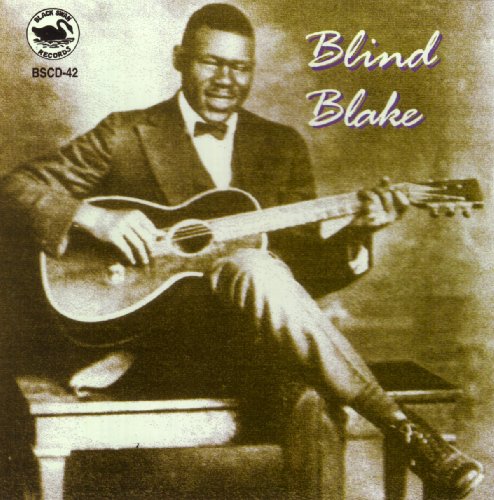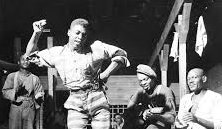Blake Was The Complete Master Of Piedmont Style Fast Ragtime Guitar Picking
 Blind Willie McTell suggested that Blake's genuine name was Arthur Phelps, however later on research study has actually revealed this is not likely to be right. In 2011 a group of scientists led by Alex van der Tuuk released numerous files concerning Blake's life and death in the journal Blues & Rhythm. One of these files is his 1934 death certificate, which mentions he was born in 1896 in Newport News, Virginia, to Winter and Alice Blake (his mom's name is followed by a concern mark).
Blind Willie McTell suggested that Blake's genuine name was Arthur Phelps, however later on research study has actually revealed this is not likely to be right. In 2011 a group of scientists led by Alex van der Tuuk released numerous files concerning Blake's life and death in the journal Blues & Rhythm. One of these files is his 1934 death certificate, which mentions he was born in 1896 in Newport News, Virginia, to Winter and Alice Blake (his mom's name is followed by a concern mark). Blake made his last recordings in 1932; his profession ended with Paramount's insolvency. Stefan Grossman and Gayle Dean Wardlow have actually recommended it is possible that just one side of Blake's last record is in fact by him; "Champagne Charlie Is My Name" does not sound like Blake's playing or singing.
One of Blind Blake's signature balanced concepts was a "thumb roll" in the bass. To pull it off, let your thumb roll off the lower string, come to rest on the next one for a split 2nd, roll off that one, and then pick up the routine alternating-bass line up until it's time to alter chords and do it all over once again. In 2011 a group of scientists led by Alex van der Tuuk released different files relating to Blake's life and death in the journal Blues & Rhythm. One of these files is his 1934 death certificate, which mentions he was born in 1896 in Newport News, Virginia, to Winter and Alice Blake (his mom's name is followed by a concern mark). Stefan Grossman and Gayle Dean Wardlow have actually recommended it is possible that just one side of Blake's last record is in fact by him; "Champagne Charlie Is My Name" does not sound like Blake's playing or singing.
One of Blind Blake's signature balanced concepts was a "thumb roll" in the bass. To pull it off, let your thumb roll off the lower string, come to rest on the next one for a split 2nd, roll off that one, and then pick up the routine alternating-bass line till it's time to alter chords and do it all over once again. In Example 4 the thumb roll does not occur on every chord modification.
Blake wed Beatrice McGee around 1931. Blake remained in Wisconsin, living in Milwaukee's Brewer's Hill area, where Paramount boarded numerous of its artists. On December 1, 1934, after 3 weeks of decrease, Beatrice Blake summoned an ambulance.
Blake taped about 80 tracks for Paramount Records from 1926 to 1932. He was one of the most accomplished guitar players of his category and played a varied variety of product. He appears to have actually lived in Jacksonville and to have actually gone to Chicago for his tape-recording sessions, at one point having an apartment or condo at 31st Street and Cottage Grove.
Deal with this for a while and attempt to get it up to a reasonably fast pace. The thumb roll will lose its bouncy quality and the entire thing will get robotic if you play it too quickly. Believe jaunty!
An interesting snippet found on a blues guitar forum:
Source: http://blindman.fr.yuku.com/reply/670167/Blind-Blakes-parents#.WDqmgvmLTIUAccording to _Blues: A Regional Experience_ by Bob Eagle and Eric LeBlanc, 2013, Blind Blake’s name at birth was Arthur Phelps, he was born in South Newport, Georgia (which is not far from the Ogeechee River and Savannah) in about 1893, his father’s name was Winter Phelps, and his mother’s name was “Melissa Lizzie Roberts.”Obviously Arthur’s widow recalled that his father’s name had been Winter. No relevant “Winter Blake” has been turned up in Virginia. She wasn’t sure what his mother’s name was. She may have confused South Newport with Newport News. Blind Blake once claimed that his “right name” was Arthur Blake. Willie McTell reported that Blind Blake’s real name was Arthur Phelps. So Arthur apparently changed his last name from Phelps to Blake at some point. Winter Phelps apparently was about 56 when Arthur was born, and died on November 24, 1924. Winter Phelps married “Lizzy Carter” on December 22, 1892.
By all accounts, Blind Blake consumed a lot of alcohol throughout his life. Perhaps this triggered a sudden death at 40 years of age. No one understands how he passed away - Reverend Gary Davis believed that Blake was torn down and eliminated by a tram.
A TRUE RAGTIME GUITAR MASTER
He initially laid down some tracks in 1926 and the offering was truly well received. The first solo track was "Early Morning Blues" and "West Coast Blues" was on the flip side. These are terrific examples of his guitar strategy and are the basis for the growing Piedmont blues technique of fingerpicking the blues..
Blake's fragile and complex finger style has actually been the motivation for Reverend Gary Davis, and lots of other guitarists.
Blake last recorded in the studio in 1932, Paramount's personal bankruptcy sped up completion of his profession. Individuals frequently state that the later tunes do not have the very same 'charisma'.
BLAKE'S AMAZING GUITAR FINGER PICKING TECHNIQUE
It's unknown if Blake was taught by a previous master, or how he formed his distinctive playing design. Naturally, numerous guitarists had a complex and balanced guitar approach, such as Broonzy and Davis, however very few were as fast and as incredibly precise as Blake.
His thumb action alone is essential to understand for newbies beginning to find out how to play blues guitar in the ragtime blues way. Numerous guitar players understand the picking pattern called 'alternating bass'.
In his musical works, no matter the secrets he applied, the chord structures and progressions he utilized were frequently easy. When finger picking quickly, his left hand fretting fingers were great at damping the bass string noise and that motion is vital to the style. It appears to me his picking hand (the right) was the most essential, however obviously both hands collaborate to make that fantastic syncopated sound.
His finger picking patterns might be separated into these parts - rolling thumb strikes, quick finger triplets and single string runs selected with alternating thumb and finger. It's a fact that other players used these tricks, however Blake utilized these strategies continually throughout his tunes, forming syncopated and complex mixes of a type not found elsewhere.
Where Did Ragtime Blues Guitar Come From?
Prior to taking a look at ragtime guitar, we need to check out the origins of ragtime piano. Everyone has heard the name Scott Joplin, Afro-American born in Texas, America in 1868. For much of us, his name is associated with ragtime, as a musical category, and ragtime piano specially. If he lived today, he'd be a rich for sure, now that his music is played all over the world for movie backing tracks and lots of other functions (how can we forget the tune of 'The Entertainer' throughout that excellent movie 'The Sting' with Paul Newman and Robert Redford?).
He trained to play piano when he left home at a young age to make his living as an artist and piano player. For a negro male, this typically suggested he had to play in any location that would make him some cash.
 Integrating his education in the European classical designs with his own impulses, and obvious African origins, he established a style of music that was elaborate, however extremely balanced with a complex beat. This brand-new rhythm was called 'syncopation' and ended up being dubbed ragtime, perhaps after a popular dance among the negro neighborhood in those times, the 'rag'. Hence ragtime piano was born from 2 cultures.
Integrating his education in the European classical designs with his own impulses, and obvious African origins, he established a style of music that was elaborate, however extremely balanced with a complex beat. This brand-new rhythm was called 'syncopation' and ended up being dubbed ragtime, perhaps after a popular dance among the negro neighborhood in those times, the 'rag'. Hence ragtime piano was born from 2 cultures.The Piedmont method of picking was perfect for dancing, had an usually much faster rhythm, syncopated pace and came from the style of playing piano called ragtime. For the most part, none of the great blues guitarists played to the exact same ability level as Blake, although Reverend Gary Davis and Blind Willie Walker were formidable performers. Guitar players desiring to play blues guitar would be well encouraged to study these artists thoroughly to find blues songs from the fantastic examples left by these masters.
At that time, groups of 'minstrel' artists moved around to amuse audiences in villages and small towns, typically delivering music played on banjo and guitar. The 2 strands of blues guitar music could be identified as the dark, emotional blues guitar of the Mississippi delta, and the bouncy dance guitar sounds of the Piedmont style of picking.
Ragtime Blues Guitar - Some early guitar players discovered that the thumb may alternate in between 2 of the bass strings, whilst the fingers picks out the tune - ragtime blues, frequently called the 'happy blues' was developed.
The Piedmont method of picking was perfect for dancing, had a typically quicker rhythm, syncopated pace and originated from the style of playing piano called ragtime. Guitar players at that time tried to replicate the complex piano sounds, which was difficult, as the guitar had a just 6 strings! (Later on, in the early electrical age, the guitar attempted to copy the noise of the saxophone.)